| Srl | Item |
| 1 |
ID:
149966
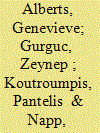

|
|
|
|
|
| Summary/Abstract |
This paper investigates the effects of information feedback mechanisms on electricity and heating usage at a student hall of residence in London. In a randomised control trial, we formulate different treatments such as feedback information and norms, as well as prize competition among subjects. We show that information and norms lead to a sharp – more than 20% - reduction in overall energy consumption. Because participants do not pay for their energy consumption this response cannot be driven by cost saving incentives. Interestingly, when combining feedback and norms with a prize competition for achieving low energy consumption, the reduction effect – while present initially – disappears in the long run. This could suggest that external rewards reduce and even destroy intrinsic motivation to change behaviour.
|
|
|
|
|
|
|
|
|
|
|
|
|
|
|
|
| 2 |
ID:
179692
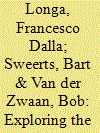

|
|
|
|
|
| Summary/Abstract |
Energy poverty is receiving increased attention in developed countries like the Netherlands. Although it only affects a relatively small share of the population, it constitutes a stern challenge that is hard to quantify and monitor, hence difficult to effectively tackle through adequate policy measures. In this paper we introduce a framework to categorize energy poverty risk based on income and energy expenditure. We propose the use of a machine learning classifier to predict energy poverty risk from a broad set of socio-economic parameters: house value, ownership and age, household size, and average population density. While income remains the single most important predictor, we find that the inclusion of these additional socio-economic features is indispensable in order to achieve high prediction reliability. This result forms an indication of the complex nature of the mechanisms underlying energy poverty. Our findings are valid at different geographical scales, i.e. both for single households and for entire neighborhoods. Extensive sensitivity analysis shows that our results are independent of the precise position of risk category boundaries. The outcomes of our study indicate that machine learning could be used as an effective means to monitor energy poverty, and assist the design and implementation of appropriate policy measures.
|
|
|
|
|
|
|
|
|
|
|
|
|
|
|
|
| 3 |
ID:
179710
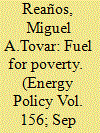

|
|
|
|
|
| Summary/Abstract |
A new approach rooted in economic theory is proposed to analyse the relationship between fuel poverty and income poverty using self-reported data. The model shows that neglecting the overlap between income and fuel poverty underestimates the metrics for the change in income poverty due to increases in carbon taxes. The model is parametrized using econometric methods. Being a single adult with dependent children, having low education levels, low income levels and having darkness or dampness in the dwelling increases the probability of being fuel poor. The estimates show that an 1% increase in carbon taxes will raise the number of people experiencing fuel poverty by 0.5%. It is also shown that while increases in lump-sum transfers are progressive, increases in energy prices and energy required to heat a dwelling are regressive. Among poor households, fuel poor households have the lowest income levels, have issues with dampness, and it is less likely that they have double glazing in their dwellings compared to other income poor households. Income and fuel poverty are two distinctive problems that require different policy instruments. Policies need to address income and energy efficiency inequalities simultaneously to counteract the regressive effect of carbon taxes in Ireland.
|
|
|
|
|
|
|
|
|
|
|
|
|
|
|
|
| 4 |
ID:
183057
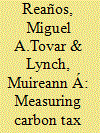

|
|
|
|
|
| Summary/Abstract |
We quantify the vertical (i.e. between income differences) and horizontal (i.e. within income differences) distributional effects of carbon taxation using a fully flexible demand system and Irish data. The model avoids imposing the curvature of the relationship between income and energy demand. We show that neglecting this fact can lead to misleading policy conclusions. We also show that losses in purchase power are the main channel of welfare losses. Losses due to limitations for energy substitution play a minor role. We found that rural households and householders in retirement age are the most affected by carbon taxation. Regarding horizontal effects, we show that higher heterogeneity in the tax burden is experienced by couples with dependent children and those in urban households. These findings highlight the importance of quantifying both horizontal and vertical distributional effects when designing carbon taxes and revenue recycling mechanisms. Within distributional effects are larger than between distributional effects regarding income inequality of the tax and revenue recycling mechanisms. We found that a targeted transfer is preferred over a lump-sum transfer in reducing welfare losses caused by the regressivity of taxation. These findings hold when measuring both horizontal and vertical distributional effects.
|
|
|
|
|
|
|
|
|
|
|
|
|
|
|
|
| 5 |
ID:
112916
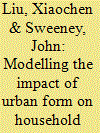

|
|
|
|
|
| Publication |
2012.
|
| Summary/Abstract |
This study aims to investigate the relationship between household space heating energy use and urban form (land use characteristics) for the Greater Dublin Region. The geographical distributions of household energy use are evaluated at the Enumeration Districts (ED) level based on the building thermal balance model. Moreover, it estimates the impact of possible factors on the household space heating consumption. Results illustrate that the distribution profile of dwellings is a significant factor related to overall heating energy demand and individual dwelling energy consumption for space heating. Residents living in compact dwellings with small floor areas consume less energy for space heating than residents living in dwellings with big floor areas. Moreover, domestic heating energy demand per household was also estimated for two extreme urban development scenarios: the compact city scenario and the dispersed scenario. The results illustrate that the compact city scenario is likely to decrease the domestic heating energy consumption per household by 16.2% compared with the dispersed city scenario. Correspondingly, the energy-related CO2 emissions could be significantly decreased by compact city scenario compared with the dispersed city scenario.
|
|
|
|
|
|
|
|
|
|
|
|
|
|
|
|